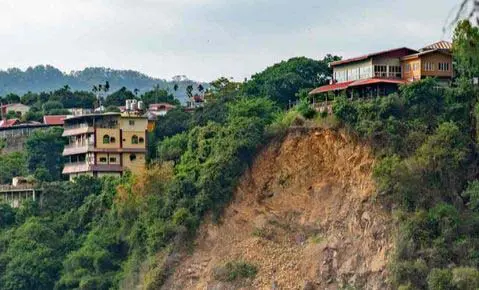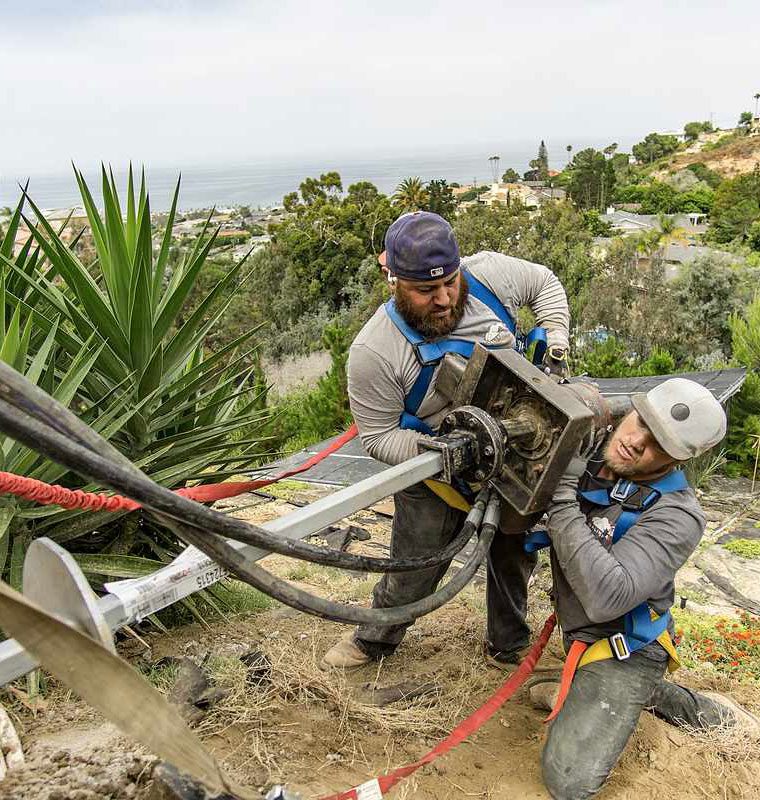For my Fleetwood Mac fans, don’t get too excited about the title. We’re not climbing mountains, turning around, and staring at a beautiful reflection in the snow-covered hills until the landslide brings us down.
This article isn’t about a 1975 metaphor – it’s about the real deal.
Mudslides have wreaked havoc across Southern California over the last few years due to wildfires ripping through our forests and the torrential downpours that follow in the spring.
The 2018 Montecito landslides in Santa Barbara County prove a sobering example of just how much damage mudslides can inflict on a community, fiscally and in terms of loss of life.
What exactly causes landslides/mudslides and what precautions can you take?
What is a landslide?
Landslides are a geological event that occurs when a slope has failed typically due to overexposure or underexposure of water.
Water acts as a cohesive. With too much water, the soil gets heavy and can pull away. With too little water, the glue-like quality begins to give way.
Slopes have soil with varying degrees of clay. When the clay soil has an overexposure to water, i.e., heavy rain or a broken water line, the clay will absorb as much water as it can.
Once the soil has absorbed as much water as possible, the clay achieves a mud-like viscosity and assumes a soupy, slimy consistency that doesn’t allow for cohesion to the slope/hillside.
In contrast, underexposure to water dries out clay souls and causes them to become brittle. When the clay is depleted of moisture it is no longer able to adhere to the hillside/slope and begins to slide downward due to gravitational pull.
What is the Difference Between a Landslide and a Mudslide?
Mudslides are a type of landslide characterized by their debris flow of rapid churning channels. Mudslides are a direct result of oversaturation of soil to the point where the friction keeping the soil stuck to the slope dissolves.
Mudslides are incredibly fast and powerful.
Landslides in general are the downward, sliding movement of soil, rock, and debris down a hillside or slope. The vast majority of landslides are incurred by multiple factors acting in tangent, the accumulative power of which destabilizes a slope.
Factors that contribute to landslides are:
As mentioned in our article Rain and Southern California, wildfires are of particular concern because they bake the soil into a hard, impermeable surface that sheds water like a duck’s back.
In addition to hardening the soil, forest fires clear large swaths of vegetation. This vegetation that used to help hold the soil in place via root systems is decimated, leaving the elaborate root systems useless – unable to soak up water.
During a mudslide, most of the loose topsoil layers are rushed downslope and can instigate massive damage.
Dalinghaus Construction, Inc. Can Stabilize Your Slope
Dalinghaus Construction, Inc. has vast experience in dealing with landslide locations in Southern California.
We have worked with numerous engineering firms to come up with solutions to help prevent landslides in vulnerable areas of concern.
We often utilize a combination of helical tieback anchors and concrete retaining walls to help lock hillsides into place.
If you live in Southern California or Arizona and would like a FREE slope stabilization inspection, click the link below –










One Response
I like that you mentioned how landslides are a geological event that occurs when a slope has failed typically due to overexposure or underexposure of water. I was watching a video earlier and it showed the results of landslides. Landslides are pretty dangerous, but thankfully, there are landslide repair services now.